All issues

Volume 39, Issue 9
Displaying 1-10 of 10 articles from this issue
- |<
- <
- 1
- >
- >|
-
[in Japanese], [in Japanese], [in Japanese], [in Japanese], [in Japane ...2002Volume 39Issue 9 Pages 519-521
Published: September 18, 2002
Released on J-STAGE: October 28, 2009
JOURNAL FREE ACCESSDownload PDF (1988K) -
Akio NAKAGAWA2002Volume 39Issue 9 Pages 527-530
Published: September 18, 2002
Released on J-STAGE: October 28, 2009
JOURNAL FREE ACCESSDownload PDF (582K) -
Problems of Clinical UseNaoto SHIBA, Yoshihiko TAGAWA2002Volume 39Issue 9 Pages 530-535
Published: September 18, 2002
Released on J-STAGE: October 28, 2009
JOURNAL FREE ACCESSDownload PDF (1325K) -
Yoichi SHIMADA, Yoshihiro TSUTSUMI, Hitoshi KAGAYA, Takashi MINATO, Go ...2002Volume 39Issue 9 Pages 535-542
Published: September 18, 2002
Released on J-STAGE: October 28, 2009
JOURNAL FREE ACCESSDownload PDF (901K) -
Kenji SUZUKI2002Volume 39Issue 9 Pages 543-547
Published: September 18, 2002
Released on J-STAGE: October 28, 2009
JOURNAL FREE ACCESSDownload PDF (678K) -
Michael K Yoshida2002Volume 39Issue 9 Pages 548-556
Published: September 18, 2002
Released on J-STAGE: October 28, 2009
JOURNAL FREE ACCESSDownload PDF (1369K) -
Fujiko HOTTA2002Volume 39Issue 9 Pages 557-564
Published: September 18, 2002
Released on J-STAGE: October 28, 2009
JOURNAL FREE ACCESSThe most essential feature of neurogenic change is loss of recruitable motor units. This concept is very important but we do not much care of it on a daily EMG examination. The purpose of this study is to demonstrate it electromyographically. We studied 5 normal subjects, 5 patients with acute neuropathy who had pathological resting activities in routine EMG study and other 5 patients with chronic neuropathy. Respective investigations were repeated 5 to 10 times depending their muscle power. Motor unit action potentials (MUAPs) were collected from each first dorsal interosseous (FDI) using a concentric needle electrode during voluntary 3 type isometric contractions (50, 150 and 300gf). They were analysed employing multi MUP analysis program which extracted single MUAPs in continuous EMG-signals. This system counted number of recruited motor units automatically. Such MUAPs were examined by amplitude and duration which were ordinary MUP parameters, too. The result of our experiment clearly shows that number of recruited motor units gives better discrimination results than amplitude or duration. The number of recruitable motor units contributes as a new parameter for the diagnosis of neuromuscular disorders.View full abstractDownload PDF (1194K) -
Tetsuya TSUJI, Meigen LIU2002Volume 39Issue 9 Pages 565-571
Published: September 18, 2002
Released on J-STAGE: October 28, 2009
JOURNAL FREE ACCESSBecause of physical limitation, patients with hemiparetic stroke are liable to immobilization especially early in a rehabilitation program. In addition, many of them are elderly and usually have multiple comorbidities such as hypertension, ischemic heart disease, arrhythmias, and diabetes mellitus. To prescribe effective rehabilitation programs while minimizing the risks of complications, it is important for us to evaluate their cardiopulmonary fitness early in a rehabilitation program. Because of their physical limitations, however, many patients with stroke cannot perform traditional stress testing using a treadmill or a cycle ergometer. In this article, we reviewed the various forms of modified stress testings for persons with hemiplegia. We also introduced our newly developed graded bridging activity (BA) and demonstrated that BA protocol was a useful mode for stress testing in persons with hemiplegia.View full abstractDownload PDF (930K) -
Tokutaro SATO2002Volume 39Issue 9 Pages 572-578
Published: September 18, 2002
Released on J-STAGE: October 28, 2009
JOURNAL FREE ACCESSIn traumatic brain injury (TBI), neuropsychological and personality disorder are accompanied by high frequency as well as physical impairment. GCS and PTA are useful for evaluation of severity, and methods for evaluation of participation applying them have been developed. There may be an obstacle of various kinds after returning to social life even in the mild TBI, and it is important to avoid overlooking symptoms and to educate a patient early. Rehabilitation system to provide continual care to include from acute period to community service on the basis of comprehensive evaluation by the many kinds of specialist is effective, and family support tends to become necessary. As a factor affecting working rate after TBI, age, CT-findings, severity of impairment at the time of hospitalization, acceptance of disability are reported. 128 cases of TBI were trained in training center of the National Rehabilitation Center for the Disabled during the past 20 years, and their employment rate was 52.3% at discharge from the center, and a follow-up survey after mean duration of 4 years revealed almost similar rate to it.View full abstractDownload PDF (969K) -
2002Volume 39Issue 9 Pages 579-584
Published: September 18, 2002
Released on J-STAGE: October 28, 2009
JOURNAL FREE ACCESSDownload PDF (689K)
- |<
- <
- 1
- >
- >|